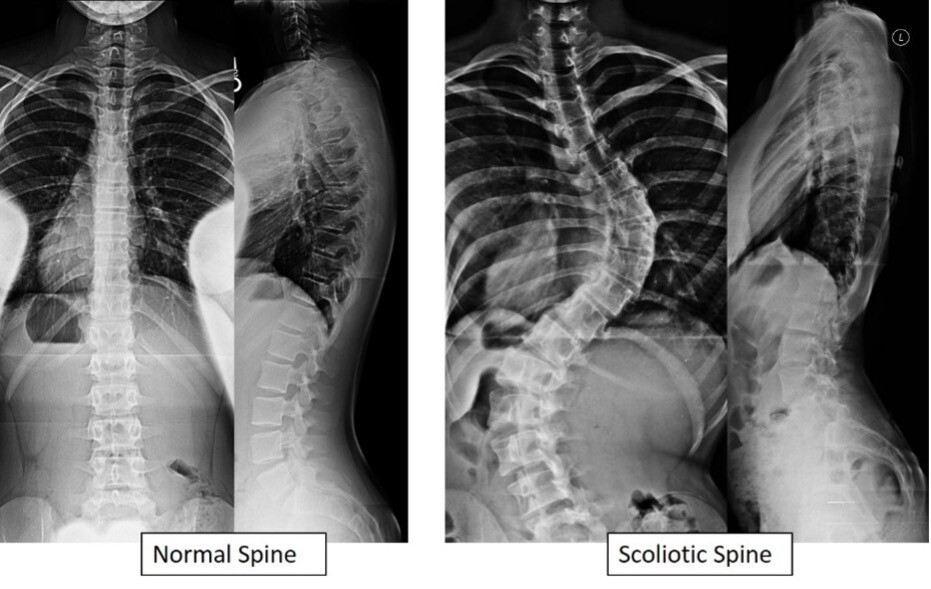
Scoliosis is characterized as lateral bending and/or a rotary deformation of the spine, named for the side of convexity. Scoliosis is most commonly found in the thoracic spine and lumbar spine and can curve to the right or left. Dextrocoliosis is a spine curvature to the right that is the most common presentation and usually affects the thoracic spine. Levoscoliosis is a curvature to the left and can be more concerning depending on the severity of the curve due to the potential to affect the heart. X-rays are commonly used to evaluate and measure the scoliotic curve progression. Scoliosis is most commonly seen in children and adolescents between the ages of 10-18 years old. Scoliosis is mostly idiopathic (no known cause) and can be functional (developed through time/movement) or congenital (you were born that way).
A thorough exam evaluating spinal range of motion, palpation, and test like Adam’s test can determine if more imaging or referral is needed. In most cases, conservative care is effective in treating mild to moderate scoliosis. Bracing can be recommended for curves of 30-40 degrees with the intention to slow down the progression. Less than 1% of all scoliosis patients require surgical correction and that is normally for curves exceeding 40 degrees.
The primary goal of any clinician treating scoliosis is to stop curve progression and any associated pain or dysfunction. It is quite difficult to “correct” scoliosis conservatively, but it is possible to help. A combination of manual therapy techniques like manipulation, soft tissue therapy, and a thorough rehabilitative plan can work to restore function and decrease associated pain. There is a heavy emphasis on postural correction and proper breathing mechanics to normalize chest expansion and education on what areas to stretch vs what areas to strengthen.
Far too often clinicians will use terminology and outdated information to scare people into thinking they will not be able to play sports or function again because of their condition. I recently had a patient who was a 14-year-old baseball player who was told he had scoliosis and was not educated on what to do about it, and his family questioned if he could play baseball effectively because of it. I was able to sit down and discuss what his diagnosis was and the positive outlook associated with it. We developed a plan that took into consideration all of their concerns and a way to meet his functional goals. A few months later he got an updated x-ray (from his primary care provider) that demonstrated the mild functional scoliosis was no longer there and his parents gave me a call to express the good news. More importantly, he was pain-free and understood how to stay out of pain and what to do on his own to continue functioning well.
If you have questions about scoliosis and how you can manage it to have a better quality of life and continue to play sports, contact us at 727-228-3030 or schedule an appointment at strengthchiro.com
.jpg)
.jpg)
